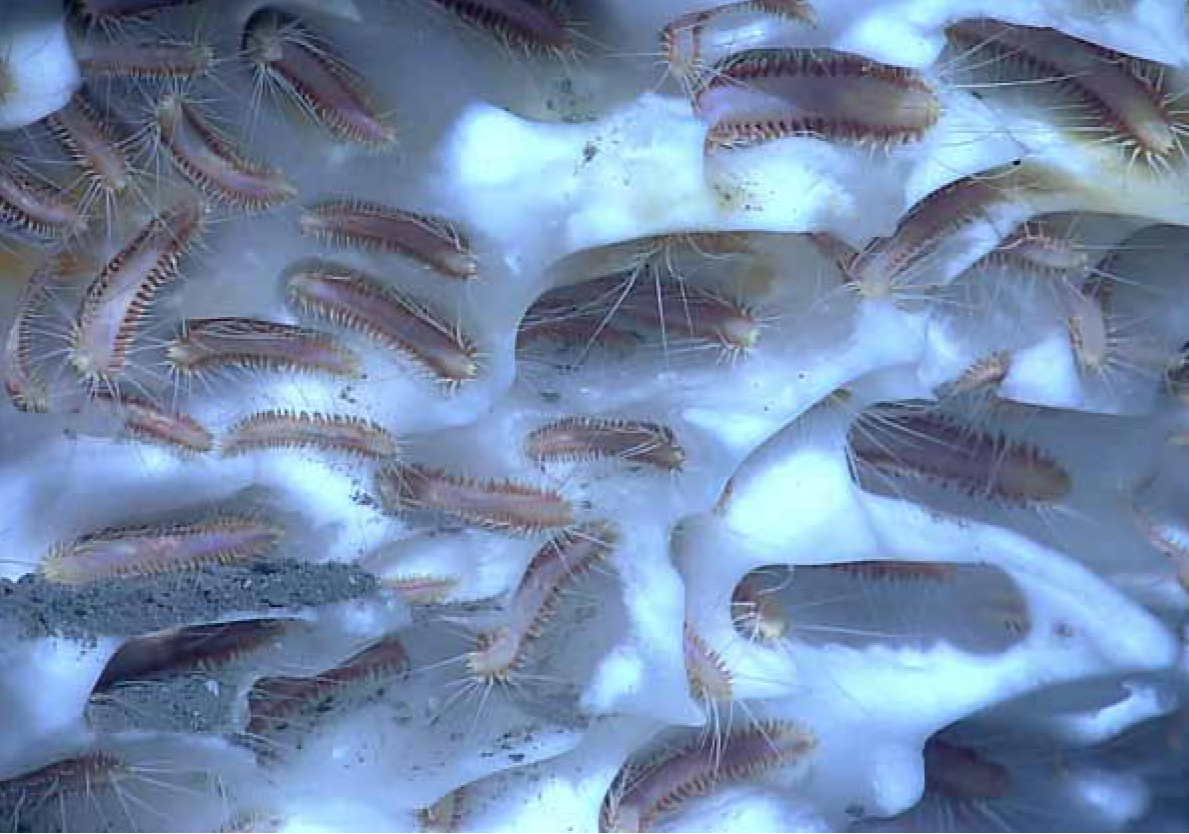CHAPTER
27

An “alien” life-form on Earth: pink, eyeless worms in an underwater mound of solid methane.
The Search for Extraterrestrial Life
LEARNING GOALS
By reading the sections of this chapter, you will learn
| 27–1 | How comets and meteorites could have aided the origin of life on Earth |
| 27–2 | On which other worlds of our solar system life might have evolved |
| 27–3 | About the controversy over proposed fossilized life from Mars |
| 27–4 | How astronomers estimate the number of other civilizations in the Galaxy |
| 27–5 | Why radio telescopes may be a useful tool for contacting alien civilizations |
| 27–6 | How astronomers hope to detect Earthlike planets orbiting other stars |
One of the most compelling questions in science is also one of the simplest: Are we alone? That is, does life exist beyond Earth? As yet, we have no definitive answer to this question. None of our spacecraft has found life elsewhere in the solar system, and radio telescopes have yet to detect signals of intelligent origin coming from space. Claims of aliens visiting our planet and abducting humans make compelling science fiction, but none of these stories has ever been verified.
Yet there are reasons to suspect that life might indeed exist beyond Earth. One is that biologists find living organisms in some of the most “unearthly” environments on our planet. An example (shown on this page) is at the bottom of the Gulf of Mexico, where the crushing pressure and low temperature cause methane—normally a gas—to form solid, yellowish mounds. Amazingly, these mounds teem with colonies of pink, eyeless, alien-looking worms the size of your thumb. If life can flourish here, might it not also flourish in the seemingly hostile conditions found on other worlds?
In this chapter we will look for places in our solar system where life may once have originated, and where it may exist today. We will see how scientists estimate the chances of finding life beyond our solar system, and how they search for signals from other intelligent species. And we will learn how a new generation of telescopes may make it possible to detect the presence of even single-celled organisms on worlds many light-years away.